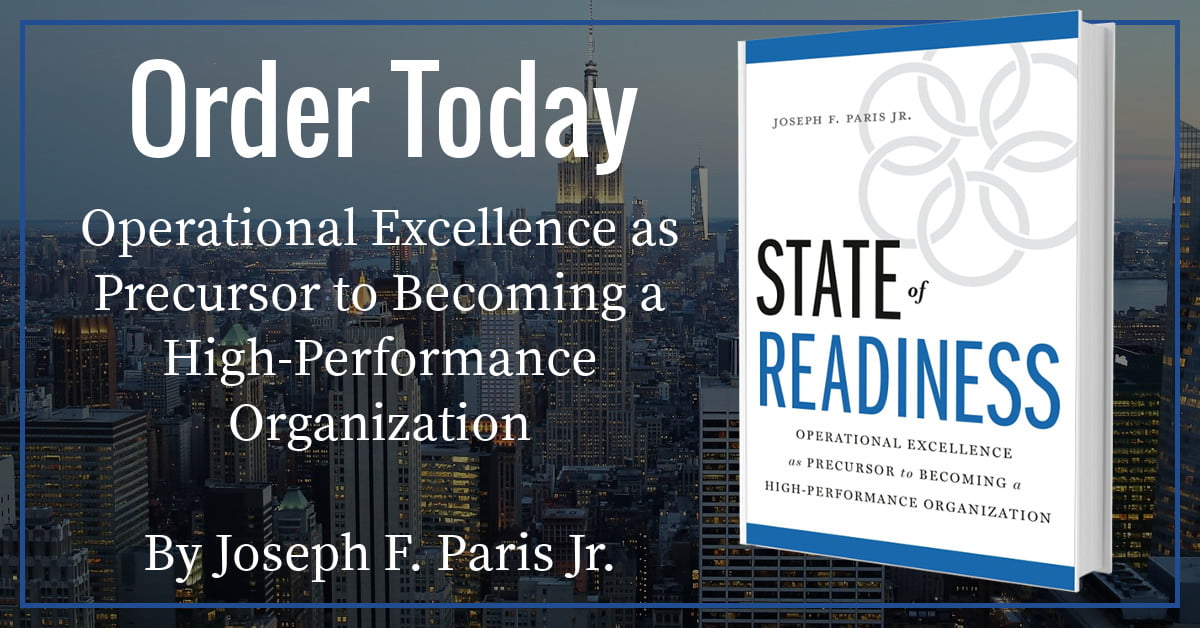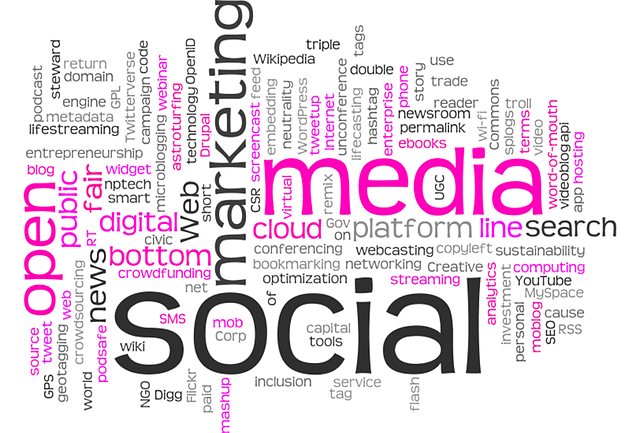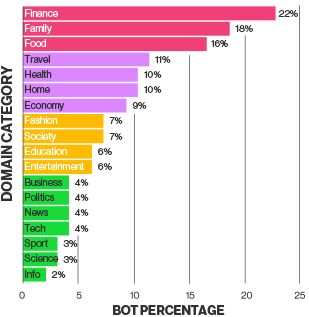Is it worth the click?
From the publicly-traded, multi-national conglomerates, to Girl Scouts selling their cookies (Thin-Mints rule), to the budding entrepreneur who opens a lemonade stand – and everything in between – there are all manner of companies and individuals offering a near infinite variety of products and services. And about as diverse as the companies and their offerings are, are the ways in which they attempt to build awareness (and the hoped-for resultant sales).
The scope of this topic of marketing and building awareness is so vast that it would be impossible to adequately address each and every permutation in an article. But I feel I have enough experience in the narrow band of marketing less tangible offerings such as consulting services (and the related tools), and especially the notion of “thought leadership”, that some might benefit from the wisdom I am about to lay-down.
First, what is a “Thought Leader”?
According to Denise Brosseau at the Thought Leadership Lab, “Thought Leaders are the informed opinion leaders and the go-to people in their field of expertise. They are trusted sources who move and inspire people with innovative ideas; turn ideas into reality, and know and show how to replicate their success. They create a dedicated group of friends, fans and followers to help them replicate and scale those ideas into sustainable change not just in one company but in an industry, niche or across an entire ecosystem.”
I feel this is as good a definition for being a “Thought Leader” as any – certainly suitable enough for the purposes of this article. A “Thought Leader” is a “somebody”. But how does a somebody become a “Thought Leader”?
- Certainly, a “Thought Leader” has to have thoughts – and the thoughts are going to be related to a specific field. Even the all-wise “guru on the mountain” speaks to the matters of life – you never hear of someone climbing the mountain and asking the guru about the stock-market.
- The “Thought Leader” will possess a command of the Theoretical aspects of their discipline, but also have considerable Practical experience – after all, “wisdom is the sum of all applied knowledge.” You can’t be a “Thought Leader” without the “T-shirt”.
- The “Thought Leader” will share these thoughts. They will do this by speaking, writing, musing with colleagues, debate. A person will never become a “Thought Leader” by keeping their thoughts to themselves – bad news for introverts.
- A “Thought Leader” will have a compelling enough story that people start to follow them (though not necessarily having to agree with every thought the thought leader might have). Remember, a leader is not a leader unless he/she has followers.
- Above all else, a “Thought Leader” is patient. It’s going to take a considerable amount of time to gain the knowledge, experience (and resultant wisdom). It’s going to take nearly as much time coalescing this growing wisdom into ideas to share, then structuring them in a manner such they are ready to be shared. It’s going to take time to get the attention of peers and build the fan-base. This is a long-term proposition. There are no short-cuts. Be prepared accordingly.
- And, lastly, keep in mind this critical nugget. People are more likely to become a “Thought Leader” by accident than on purpose. It sounds a bit counter-intuitive, but “Thought Leaders” are naturally curious and enjoy the debate and resultant discovery – and this serves the requirement of being patient very well. A person who sets out to be a “Thought Leader” will usually lack the patience to see it through to the end.
So, let’s assume you have the knowledge, experience – and wisdom. You feel you are a “Thought Leader” and ready to share this wisdom beyond the audience that already knows you. You feel you have something that would benefit those in an expanded constituency – perhaps you might even be able to make a better living for yourself as a result of your sharing. What should you do?
Write
Write down your thoughts so that they can be shared with others. Creating content and sharing that content – marketing that content – is the beginning of the process. And content marketing is the creation and distribution of informative materials that are relevant and of value to a specific target audience with the expectation of engaging the audience and expanding its size and affinity towards the creator of the content.
Creating content differs from advertising by reversing the flow of engagement. Instead of an advertiser “pushing” an offering to the marketplace, the writer of quality content will create a “pull” within the marketplace (and I can’t stress enough the importance of quality in the content). Also, the reader is not interrupted by reading the content as an advertisement would – in fact, the reader is there because of the content.
According to an article in Forbes, dated September 19th and entitled “What is Content Marketing”, such content can be conveyed using; web-pages, infographics, podcasts, videos, books, or combinations thereof – basically, any form or means which conveys knowledge from a source to a consumer. Driving value to the reader in this way is the first-best way to begin attracting followers who might become fans.
Know your audience.
Who is your target audience – not just who might read what it is that you have to share, but who do you want to read what you have to share. You want to ensure that the content will resonate with your intended readership. Remember to create content that is of benefit to your audience – not to (or about) you. If your audience is academia, make sure to structure it so that an academic can relate to it. If your audience consists of practitioners, make sure to position the content so that it addresses the challenges they might face in their profession.
Tell a story
People are drawn into the narrative by answering the question “why?” Why does what you have written matter to them? Only after you answer “why” should you go into the details of; what, when, where, how, etc.… If you dive right into the details without offering the context, they will never read until the end – sell the sizzle and not the steak.
Share your wisdom
People are always seeking wisdom. Let people know that you have wisdom to share (in a humble manner) and can drive value to their endeavors. Start writing about your experiences. What was the challenge? What prepared you for your experience? What challenges did you face along the way? What was the result? And, most important, be human – be honest and approachable, not aloof. What did you learn as a result of applying what you had been taught? If you could do anything over again, what would it be and why.
Remember that less is more – and more is better
As the owner of the Operational Excellence Group on LinkedIn (with 50,000 members), I read a lot of posts (all of them, actually). The vast majority of the posts are what I call “popcorn posts” – as with popcorn, they take-up space, but have little (if any) nutritional value. And when I am done reading them, I often think “this post was not worth the click”. So, the question to ask yourself – and to answer truthfully – what do you think your reputation is as a result of your posts?

The risk here is that you are establishing your credibility with your audience through your posts – this is the first time (perhaps only time) they will be exposed to your thoughts, experiences, and wisdom. If people read several of your posts and they are popcorn, that is what your reputation will become and people will instinctively “squelch-out” your posts – drive right by without even taking a look. So even when you do finally share that one nugget of brilliance, very few people will read it. Of course, you can always count on your friends and family – well, most of the time.
This is not the result you seek, so it is better to publish less often (but consistently) and with greater quality. For instance, I write one article per month. They weigh-in at between 2,500 words and 7,500 words (this article will top-out at approximately 4,000 words). Make sure your content is credible and to include a lot of links to supporting content from trustworthy sources – as nothing will turn-off the reader if they don’t find your writing trustworthy. And whatever you do, don’t write a sales-pitch – it’s an instant turn-off and your reader will immediately leave if they feel they are being pitched.
Your audience is smart. If you write something that resonates with them, they will contact you. Lastly, if you can’t write well, don’t let that discourage you from sharing your wisdom – hire a copywriter to help you hone your message. I have been fortunate in that I am able (I believe) to write all my own stuff.
Be seen in the right places
Certainly, you should put your content on your own website, but that is hardly going to get you heard. I have not been able to find a recent and credible report that provided website traffic (latest I could find was 2007), but I did an informal poll of approximately 25 peers who might be considered “Thought Leaders” about their web-traffic.
Unsurprisingly, most of them didn’t know how many visitors per month their website received. Of those who did know (or could find out) how many visitors came to their website, 80% had 25-75 visitors per day and 20% (the peak of the Pareto chart) had 50 visitors per day – hardly what I would call a “center of gravity”.
And all of them leveraged (to varying degrees of consistency) their social media channels such as; LinkedIn, Facebook, Twitter, Google+, etc… to help drive traffic.But as they say in the United Kingdom, 50 visitors per day (including crawlers and bots) “doth butter no parsnips”, meaning it has no real practical effect (I always wanted to use that phrase).
To be exposed to an expanded constituency, build your reputation, and gain real traction on your path to becoming a “Thought Leader” (with the requisite followers), you will have to leverage media channels that are relevant to your expertise and also a “center of gravity” for engagement with your intended audience – meaning the websites must be considered credible and have a sizable volume of traffic of the people who you wish to have consume your content.
Unfortunately, as you are becoming a “Thought Leader”, access to these channels will require an investment. It is only after you become a bona-fide “Thought Leader” (meaning, you have a considerable following) that people will give you access to the channels without your making an investment (or, under rare circumstances, pay you for your contribution).
The alternative is for you to build your own channel, with your own resources and infrastructure, and become your own center-of-gravity. However, this will take a lot of investment in itself and also take a considerable amount of time (measured in years and in tens of thousands of dollars). So, if “now” is important – and keeping in mind that building a reputation takes time in and of itself – then invest in the access (balancing value for monies invested of course – and always).
Many people and their companies make the mistake of trying to be something they are not just to expand their reach. In reality, this only serves to dilute their core value and confuse the audience. So create (and curate) content that is specific to your expertise – and don’t create content that is unrelated to your expertise (or even just loosely related). In other words, don’t try to become The Daily Beast or The Huffington Post.
If you are an expert of golf and not an expert of football, don’t try to position yourself as an expert of football (even though both are sports) – just ask yourself, “would I go to a website about golf to read something about football?” and “if I saw an article about football at a golf website, would I wonder what this article is doing here?” Stick to your expertise – you do a disservice to yourself (and your audience) otherwise.
Publish a Monthly eNewsletter
Use an eNewsletter publishing solution (such as Constant Contact), not just an eMail and, worse, an eMail with a pdf attachment – “Thought Leaders” don’t look like amateurs. Be sure to include your latest article. You might also include some fun or funny things and perhaps serve as an aggregator of interesting content that is related to your particular expertise from other credible sources.
Make sure to eliminate hype and pitches – and don’t brag about your latest hire or project won – it’s the fastest way to the spam-filter if you do. Share an upcoming webinar or conference at which you will be speaking is okay (it offers the reader the opportunity for direct contact). But always remember and never forget, it’s about the reader, it’s not about you.
Speak
Eventually – hopefully sooner rather than later – you will have the opportunity to share your thoughts in front of a live audience. But this will take some time, especially to and within your newly expanded audience, and should only be expected as your reputation builds (favorably, of course). So, you should prepare for this moment in the spotlight.
Guest Lecture at University.
Other than being a business owner and having to make presentations to prospects, clients, vendors, and colleagues; this is where I cut my teeth as a speaker to people I didn’t know at all. Speaking to a group of strangers is a little different from speaking to a group of people where the exchange is predictable because of calls and correspondence from which you have prepared.
You will not have as firm a grasp as to how the dynamics will play out; will they understand enough? Perhaps too much? What questions will they ask? Do I know the known unknowns? What about the unknown, unknowns? Yikes!Don’t expect to get paid to guest-lecture (until you are the “Thought Leader”, and then only maybe). But the experience you gain by speaking in front of others will be invaluable. Besides, I found (and still find) the experience of speaking to/with university students some of the most rewarding and have continued to be in contact with many of the students who I have met over the years – even being a mentor, on occasion.
Speaking at Conferences
In all likelihood, your speaking career will follow the same (or similar) track as mine; i) when you are building your reputation, you will pay to play [a fee to speak plus covering your expenses] then, ii) when you have established yourself as a credible and capable speaker on the subject, your fees will be waived but you will have to cover your expenses and finally, iii) you have become a “Thought Leader” and they will pay you a stipend to speak and cover your expenses. Of course, I still do a lot of “pro-bono” appearances for universities – I find it keeps me young, fresh, and always on my toes.
If you are a real rock-star, you can command a premium to deliver your content. But most of us will be in the warm-up bands (which is not so bad).
And we should also address what you should not do to build awareness and become a “Thought Leader” – and that is to purchase advertisements. And this is especially true of purchasing internet (on-line) advertisements. Don’t do it.
If you are selling gadgets (such as electronics and hobby items) and experiences (like vacations and foods), maybe traditional internet advertising might work for you. After all, these advertisements pull on our more whimsical and fanciful strings and can be visually pleasing to the eye enough to catch our attention and “earn a click”. But what if you are selling something less tangible and more dry – even rather dull and boring – such as services?
Can one get excited about your knowledge of the latest tax ruling or court decision – can you even turn such a thing into an advertisement? One that would catch someone’s attention enough to “click”? How about the latest business improvement methodology, tool, or software application? How can you possibly make an advertisement that will be attractive enough to earn that click – especially from someone who has not heard of you before? Can you create an advertisement that will catch someone’s attention without risk of inducing an epileptic fit or a mescaline flashback? Is it the best use of your precious marketing dollars to create and post an advertisement in hopes of expanding the awareness of you and your offering?
The attractiveness of internet advertising is that it is simple; you create an advertisement, you place it someplace, cut a check, and wait for the calls to start coming – but they don’t. You believe you have accomplished something, progressed your messaging – but you haven’t. After the term expires, your advertisement is gone – no trace it ever existed. All you have done is moved your money from your pocket to someone else’s.
With content marketing, your “advertisement” never expires, but remains forever and will be read over an again, many times, over the course of years. For instance, consider this article. It will remain searchable on the internet for as long as there is an internet. Need proof? Just look at all of the articles to which I referred (and linked) in creating this article. That is staying-power.
Even when you are shown the “click reports” from your advertising campaign, are you sure the clicks you are getting on your advertisements are real and not the result of “click-bots” and other forms of “click-fraud”?
According to an article in Adweek and a report from White Ops, the percentage of “bot-clicks” varies between 3% and 37% in 2015 as compared to 2% to 22% in 2014 – and increase of 50% year-on-year. So can you even be sure how much of the attention your advertising is real? Chances are, you are paying regardless of how “real” the click might be. And this does not include inadvertant clicks, the result of the positioning of the advertisement or its sensitivity.
The people who read my articles are (mostly) fine and upstanding citizens of the world, so I won’t write about how the advertisements themselves might be engineered to be fraudulent or have other nefarious aims in mind (because nobody that reads this article would do such a thing). But suffice it to say, that there are many ways to commit fraud in advertising. So you will also want to be careful when you click on an advertisement (I recommend never clicking on an advertisement unless it is from a reputable website – be careful even then).
Bloomberg produced a fabulous article, “How much of your audience is fake?” which does a deep-dive into the world of on-line advertising. It is a highly recommended read, as well as:
* The Atlantic; “Welcome to the Internet of Thingies; 61.5% of Web Traffic is Not Human”
* Adweek; “Topic: Ad Fraud”
* MOZ; “The Alleged, $7.5-Billion Fraud in On-Line Advertising”
If fraudulent views of your advertisement were not bad enough, people become conditioned to ignore advertisements. This is very similar to the phenomena associated with how people behave with respect to advertisements in newspapers, magazines, or even billboards we might pass on the highway. Called “Banner Blindness”, our brain becomes conditioned by our behavior and trains itself to focus on what is important and ignoring, or squelching-out (as applied to radio and television) what is not important.
In my opinion, a reasonably thorough study published by Humanistic Experience and entitled “UX-Research Banner Blindness” goes into great detail analyzing this human behavior. One of the most compelling findings offered were the “heat-maps” generated by humans as they read a web-page. It is obvious that advertisements are ignored even though displayed (and the advertiser charged).

And, finally, there are “advertisement blockers” (ad-blockers), which are becoming ever more popular as users become increasingly irritated at the ever more aggressive tactics advertisers are using to pump-up their impressions (“views” – whether by robots or real people). According to an article in “The Economist” on June 6th, 2015 entitled “Block Shock”, it is estimated that nearly 200 million internet users will have installed ad-blocker software in 2015 with the trend indicating an additional 50+ million users of ad-blocking software year-on-year.
And Fortune published an article on September 21st, 2015 entitled “Who are the biggest ad blockers”, as well as did MarketingLand and their article on September 22nd, 2015 entitled “Ad Blocker Usage Highest Among Key Advertiser Demos: Millennials And High Earners”; both of which do a deeper-dive into who are using ad-blockers, and both of which should be of concern to those thinking of on-line advertising.
At this point, all of the major web-browsers have advertisement blocking software available for their users. Even Google (whose livelihood depends on advertising) has created its own advertisement blocker for Chrome. But there are also ad-block plug-ins for Mozilla, and Safari (Apple), and Microsoft Internet Explorer.
In Conclusion:
With respect to purchasing on-line advertisements and given all of this, it’s difficult to justify the amount of expenditure for the amount of real and tangible benefit obtained – that “the juice is not worth the squeeze”. And if these trends were to follow their respective courses to conclusion, there is a potential that the only real person who sees your on-line advertisement might be you…
So, if you really want to share your thoughts with people, if you want to reach them – if you want to give them the opportunity to seek you, become fans, and as a result you become a “Thought Leader” – then you have to publish your content and leverage the appropriate distribution channels so that they have a chance to follow and you have a chance to lead.
===============================================================
Epilogue:
Over the course of the past several years, I have created a considerable ecosystem dedicated to the subject of Operational Excellence, which I define as; “a state of readiness that is attained as the efforts throughout the organization reach a state of alignment for achieving its strategies; and where the corporate culture is committed to the continuous and deliberate improvement of company performance AND the circumstances of those who work there – to pursue ‘Operational Excellence by DesignSM, and not by coincidence.”
The genesis of this ecosystem started at an Annual Conference of the Institute of Industrial Engineers back in 2006 (-ish, I believe), I was with some colleagues and peers and the subject of Operational Excellence came up in conversation – what, exactly, was Operational Excellence? If it was just Lean Six-Sigma, why not just call it that? Why do we need a rebranding of a discipline? To me, it had to be more – a next generation of enterprise operating systems. Something beyond just eliminating variants and waste or increasing quality. But what, exactly?
Afterwards, one of the first things I did after that conference was create the Operational Excellence Group on LinkedIn (and later, its companion group, the Operational Excellence Society) so that I could (perhaps) attract people to discuss their ideas of what Operational Excellence might be. People would apply to join and I would approve them. I purposefully managed the group with a “light-touch”, seeking to encourage engagement.
And I would read (and often participate in) the Discussions and Comments posted by the group members. There was/is a good energy in the group, and there were some very interesting contributions and quality engagement; people sharing their experiences and seeking insight. I started investigating, researching, writing, and speaking on the subject – ever expanding what I knew and (every day) realizing what I didn’t know was a lot. And still I kept at it – always sharing, always listening, and always reading. I do this still, and probably always will. There is something new each and every day.
Eventually, LinkedIn sent me a notification that my group had exceeded 5,000 members and I had to request permission to expand beyond (which was approved); then another at 10,000 and yet again at 20,000 (afterwards, I was given clearance to grow unfettered). I could not help but wonder, “Who are these people?” and started to pay much closer attention. What I learned from what was being shared, and the opinions and hypothesis I derived, served as the basis for what I now consider to be the essence of Operational Excellence.
Admittedly, the building of the Operational Excellence ecosystem on LinkedIn was more a “Forrest Gump” moment than a design-play – more lucky than smart. But today, at 50,000 members, the group is the largest group dedicated to the discipline of Operational Excellence (by a considerable magnitude) over any other group similarly dedicated – and almost all the members of those groups are also members of the one I founded.
So, it has taken almost 10 years – and fast forward a bit over the thousands of hours (and 10’s of thousands of dollars) spent, but I have grown the ecosystem so that it is far beyond its genesis in LinkedIn. In addition to the 50,000 members of the Operational Excellence Group on LinkedIn; the Operational Excellence Society website (www.opexsociety.org) enjoys nearly 400,000 monthly visitors who consume 1,000,000 pages and the eNewsletter, “Operational Excellence by Design” has 25,000 subscribers – and we recently launched a podcast called “The Outliers Inn” (www.outliersinn.com), which has just published its fourth episode. And although I don’t quite “get” Twitter – there is an account for it too (@OpExSociety).
Best of all, the Operational Excellence Society’s ecosystem and various channels are available to you to help you accelerate your journey in becoming a “Thought Leader”.
By Joseph F Paris Jr

Joseph Paris is an entrepreneur with extensive international experience. He is the Chairman of the XONITEK Group of Companies, an international management consultancy firm he founded in 1985; and the Founder of the Operational Excellence Society, a “Think Tank” dedicated to serving those interested in the disciplines of Operational Excellence. In addition, Paris serves on the Advisory Board of the System Science and Industrial Engineering Department at Binghamton University and on the Process Industries Division at the IIE. He is also on the Editorial Board of the Lean Management Journal and a sought-after speaker, guest lecturer and writer.
Connect with Paris on LinkedIn








